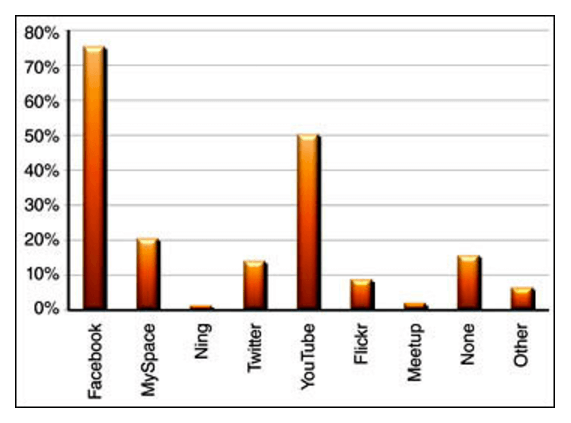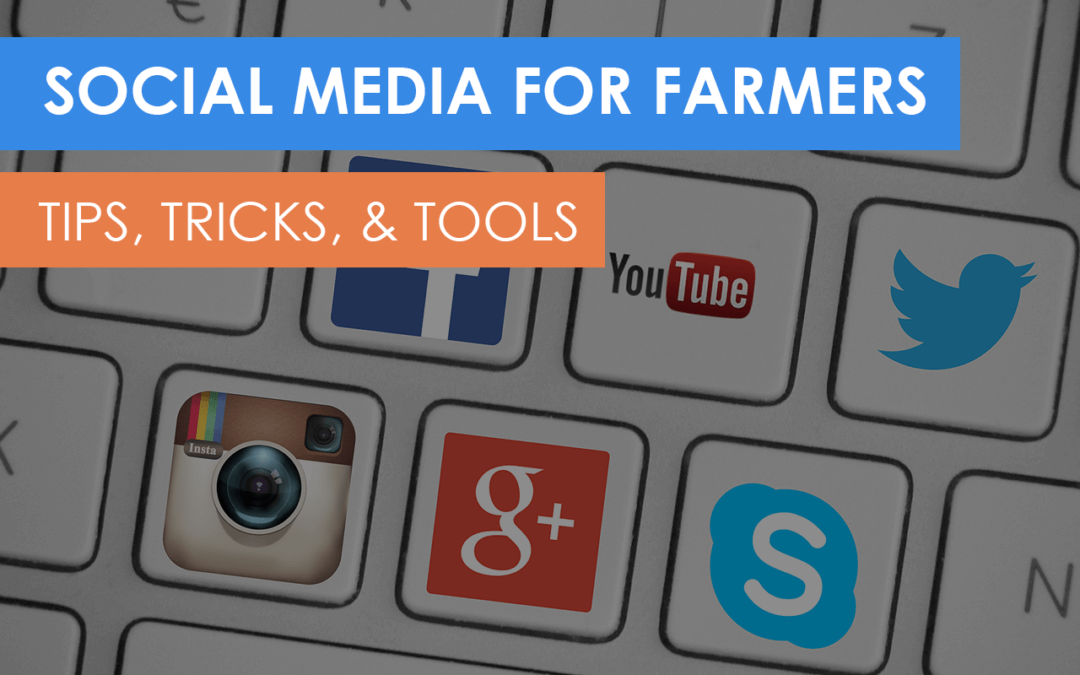We’ve already discussed the myths of social media marketing, the reasons to build a social media strategy, and the best ways to use social media for farmers. But one of the challenges of social media is figuring out how to do it quickly and efficiently. It’s frustrating to spend an hour writing one simple social post, and that frustration has kept many farmers from utilizing social media for market research, lead generation, and opportunity finding.
In this article, we’ll name some of the best tools, tips, and tricks for making social media easy. Our goal is to give you all you need to use social media with 5–10 minutes a day and no more.
We break down the task of social media into identifying social media opportunities (situation), finding things to share (content), and some practical tricks and guidelines (tools).
1 – Situation: Identifying opportunities
Life is full of shareable moments. Once you understand that your audience wants to hear about your farm, what you’re up to, your values, and your story, you’ll be able to grasp those opportunities. Here are some examples of subject matter that you can use for social media posts.
Events
Farmers markets, tours, conferences, or even interesting things like custom deliveries and trips can be great opportunities to share with your followers and friends.
Interesting tasks
Showing people how stuff works on the farm is a great way to pull back the curtain. Behind-the-scenes looks allow people to get to know your team and see how their food is grown. Show your customers how you live out the values that you market.
Releasing beneficial insects as a part of your environment-friendly pest control? Show it. Filling your recirculating water tank? Show it, and explain how recirculating systems conserve water. Harvesting basil? Show it and give details and list where you’ll be selling it.
The bottom line here is that everything you do in your farm is a part of the farm story. It relates to your goals and vision. Help make that connection publicly. Walk the talk!
New produce, new farm stuff
Have a new variety? Show it off. New piece of farm equipment? Explain how it will help you grow more great produce.
News
Any farm news that impacts your customers should be shared. If you’re having a special sale or making a special appearance at a certain market, make sure people know about it.
Sharing
Spotlighted on a blog or newspaper? Share a link. Read an article that you think your followers should know about? Share a link. If someone in your community has something important to say, share a link.
2 – Content: Finding things to say
“Ok,” you might be thinking, “So I want to share a thing… but what do I SAY?”
You can share what’s important in many ways. Here are some of the most popular:
1) Fact
Interesting facts about your crops, methods, materials, and team
E.G.: “Basil was once thought to cause madness to people who smelled it. Luckily, that myth has been dispelled.”
Did you know that people used to think basil spawned scorpions?Glad we got over that! #foodlogic #pesto #farmfactshttps://t.co/cDNamPdIaK
— Amy Storey (@The6thStorey) April 21, 2017
2) Stat
Stats about food consumption, your audience, farm processes, etc.
E.G.: “Johnson Family Farm uses only 50 gallons of water each day—20% as much as a traditional farm!”
3) Opinion
Opinions that relate to your farm and vision. Be careful here—be courteous and keep political views separate from your farm.
4) Question
Anything, from a fact to a poll, can be transformed into a question.
E.G. “Did you know that ancient Egyptians used to make alcohol from cucumbers by mixing the inside of the fruit and burying it for days?”
5) Pictures
A picture is worth a thousand words. They convey farm brand, values, and processes. You can show parts of your farm or take to graphics to show an idea or fact.
6) Quotes
Hear a quote that is important to your farm? Share it!
7) Status
Sometimes it’s good just to share a quick status.
“The Johnson Farm team is busy prepping for our Spring Plant Sale! See you there!”
3 – Tools: Tricks, and tips
Timing is key
Timing is important if you want to get a time-sensitive piece of news (an open invitation, a post for a national day or birthday, etc.) to people.
Director of Upstart U Halle Brake says, “You want to think about when you’re posting things based on when they are relevant. So if you’re posting about an upcoming event, you want to time it so that it’s early enough to give people a sufficient heads up, but not so early that it gets lost in people’s newsfeeds far before the event even happens.”
Keep it relevant
Depending on your branding strategy, you should have a group of things, ideas, and stories with common themes. Stick to that! While local farmers do have a unique opportunity to have a personal relationship with their communities, your farm should be in the spotlight of your social media.
In short: don’t post lots of posts that are irrelevant to your farm.
Stay active

Social media use (percent of respondents who use each tool). Source.
The benefits of social media are only viable if you act on them! You can’t harness the benefits of direct communication or engagement if you don’t communicate and engage! If this isn’t natural for you, try setting small consistent goals. Respond to one comment per day or spend five minutes on Twitter each day.
Start with the easy platform
There’s a reason that nearly half of farmers use Facebook—it’s easy! Most people have been on Facebook, and publishing updates on Facebook is incredibly easy.
Mimic the masters
Running out of ideas? Think your channel needs some sprucing up? Watch the masters and do as they do. People need to understand they shouldn’t just be reposting, resharing or copying people’s content. But rather researching successful pages and see what strategies they use to get engagement. Then, putting their own unique, relevant spin on these strategies for their farm page.
Find a farm that’s doing well with social media and spend a few minutes drifting through their channel. As you go, note the strategies they use to get engagement. (Maybe they ask a question in a certain way, use people in their photographs a lot, etc.) Then, put your own unique, relevant spin on these strategies for your farm page.
Schedule ahead
If you find that creating posts every day is still too time-consuming, try using a social media calendar like Loomly or MeetEdgar. This is a nice way to plan ahead and get a jump on all those posts your audience will expect! Remember, though, that keeping your content relevant is of utmost importance, and scheduling posts too far out might be less effective.
Consider scheduling posts that will be relevant no matter what, like highlighting your mission statement or announcing your weekly CSA, and fill in the gaps with daily photos or news from your farm.
Have fun
People are fun. You are fun. This is a great time to be a farmer—enjoy it!
Want more? Try the course on social media for farmers.
If you want to learn more about social media marketing, try out the Social Media Marketing for Farmers course on Upstart University, or check out our Ultimate Guide to Starting a Farm!
The course is taught by Nick Burton of State of the Soil. Nick is the owner of multiple companies, a public speaker, and a coach of hydroponic & farm-to-market agricultural operations. With 20 years in the green industry, Nick has the experience, resources, and connections to bring your farm to the next level of profit and sustainable operation.
In this course:
- Why social media?
- Expert rules for self-promotion
- How to access, navigate and understand Facebook Audience Insights
- How to research local market-based income, interests, age, and other demographics
- How to use Facebook Ads
- How to ID trends & strategies that match your farm and your customers
- and much more




Great article! I really appreciate this article. You are providing the best info. Thanks a lot for sharing.
Nice article and amazing photoshoot. It’s really an informative Blog. Thank’s a lot for sharing.
Your Blog is nice and the photoshoot is amazing. Thank’s a lot for sharing.
Very precise and helpful post !! Thanks for sharing this post!! Keep sharing.
Social media platform for farmers in India